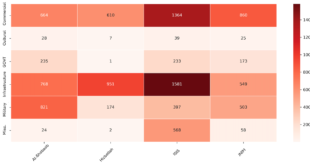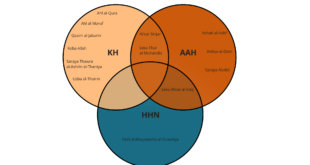A top Air Force leader in the Pacific refused to confirm or deny recent reports that a U.S. aircraft disguised itself as a Malaysian plane, allegedly “spoofing” a transponder signal to spy on Chinese military activities. But he said the U.S. didn’t break any rules.
Popular Mechanics last week reported that an RC-135W Rivet Joint reconnaissance aircraft flying off of China’s Hainan island electronically impersonated a Malaysian plane while transiting through the South China Sea.
Speaking to reporters during the Air Force Association’s virtual Air, Space & Cyber conference Wednesday, Gen. Kenneth Wilsbach, head of Pacific Air Forces, objected to the term “spoofing” and claimed the aircraft was following international rules regarding transponders.
“I know we follow the rules for international airspace, and we were following the rules that day,” Wilsbach said. He did not offer additional details on what the Rivet Joint did during the flight.
Aircraft spotters with the South China Sea Probing Initiative, a think tank launched by Beijing-based Peking University, reportedly noticed the Rivet Joint from Kadena Air Base, Japan, change its “Mode S” transponder code, which gives pilots more situational awareness in a traffic-heavy sky and transmits aircraft information to a Secondary Surveillance Radar used by air traffic control. To comply with the International Civil Aviation Organization (ICAO), Mode S-equipped planes have a unique “hex code” to identify that particular aircraft.
According to Popular Mechanics, on Sept. 8, the Rivet Joint’s Mode S number “suddenly changed” from AE01CE to 750548. Per the ICAO registration, 750548 is the number “for an unknown Malaysian aircraft,” the website said.
The alleged move came days after China accused the U.S. of trespassing in what it deems a “no-fly zone” after a U-2 Dragon Lady reconnaissance aircraft was spotted over the Yellow Sea on its north coast.
“The trespass severely affected China’s normal exercises and training activities, and violated the rules of behavior for air and maritime safety between China and the United States, as well as relevant international practices,” Wu Qian, a spokesperson for the Chinese Defense Ministry, told CNN on Aug. 26.
Wilsbach said the flight was not out of the ordinary for how the Air Force conducts its patrols.
“We fly the U-2 almost every day, and we particularly look at Russia, China and North Korea with the U-2,” he said. “It wasn’t necessarily a one-off [incident] in the fact that it was flying in a track that we frequently fly in.”
Wilsbach said China’s claims of a no-fly zone aren’t in accordance with international law. While the Air Force was aware of China’s restriction, he said it “chose to fly there anyway [because] it was within our rights to do so in international airspace.”
The U-2, which is capable of flying at 70,000-plus feet, “has some flexibility with the sensors you could put on” with superior intelligence collection systems — providing multi-spectral imaging of targets to extreme ranges — as compared to some other intelligence, surveillance and reconnaissance aircraft, he said.
Even though the aircraft is more than 60 years old, “it’s so reliable,” Wilsbach added.
 Eurasia Press & News
Eurasia Press & News



